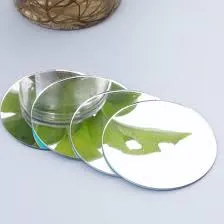

Understanding Dual Low-E Glass Benefits and Applications
In recent years, the demand for energy-efficient building materials has surged, and one of the most significant advancements in this field is dual low-emissivity (Low-E) glass. This innovative product has revolutionized the way we think about windows and insulation, leading to more sustainable and cost-effective architectural designs.
What is Dual Low-E Glass?
Dual Low-E glass features two layers of low-emissivity coating applied to the glass surface. These coatings are designed to reflect infrared radiation while allowing visible light to pass through, providing a more efficient thermal performance compared to traditional glass. The primary function of Low-E coatings is to minimize heat transfer, keeping interiors warmer in winter and cooler in summer.
The dual aspect refers to the use of two Low-E coatings, typically applied on different sides of the glass pane. This configuration enhances the glass's insulating properties by creating a barrier that reduces heat loss and gain. By reflecting heat back into the building during colder months and deflecting solar heat in warmer months, dual Low-E glass strikes a balance that is ideal for various climates.
Key Benefits of Dual Low-E Glass
1. Energy Efficiency One of the most significant advantages of dual Low-E glass is its ability to improve energy efficiency. Buildings utilize less energy for heating and cooling, leading to reduced utility bills and a smaller carbon footprint. This makes dual Low-E glass an excellent choice for green building initiatives.
2. Comfort and Consistency In addition to its energy-saving properties, dual Low-E glass enhances indoor comfort. It minimizes temperature fluctuations, ensuring a consistent and pleasant environment for occupants. This is particularly beneficial in spaces with large windows or extensive glass facades.
3. UV Protection Dual Low-E glass also provides effective protection against harmful ultraviolet (UV) rays. By filtering out a significant portion of UV radiation, it helps preserve furniture, flooring, and artwork from fading and deterioration, prolonging their life and maintaining aesthetic appeal.
4. Noise Reduction The design of dual Low-E glass can also contribute to sound attenuation. With multiple layers of glass and insulating gas fills, this type of glazing can significantly reduce outside noise, creating quieter living and working environments.

5. Aesthetics Dual Low-E glass is available in various tints and finishes, allowing architects and designers to achieve their desired aesthetic while benefiting from its functional attributes. Whether used in residential or commercial settings, it can enhance the visual appeal of any project.
Applications of Dual Low-E Glass
Dual Low-E glass is versatile and can be incorporated into a wide range of applications. It is commonly used in
- Residential Windows Homeowners looking to improve energy efficiency and comfort often replace standard windows with dual Low-E glass options.
- Commercial Buildings Many modern commercial structures utilize dual Low-E glass for large glass windows and facades, maximizing natural light while minimizing energy costs.
- Skylights and Curtain Walls Dual Low-E glass is ideal for skylights and curtain walls, providing significant energy savings along with stunning visual effects.
- Passive Solar Design Architects leveraging passive solar design principles often employ dual Low-E glass to optimize solar gain during winter while minimizing heat during summer.
Conclusion
In summary, dual Low-E glass represents a significant innovation in energy-efficient building materials. Offering numerous benefits including energy savings, comfort, UV protection, and aesthetic flexibility, it is an increasingly popular choice for both residential and commercial applications. As the building industry continues to prioritize sustainability, dual Low-E glass will undoubtedly play a crucial role in shaping the future of architectural design.